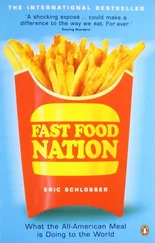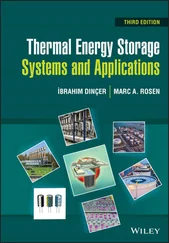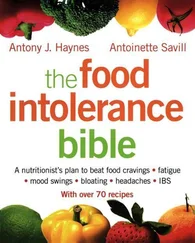NITIN KUMAR - Thermal Food Engineering Operations
Здесь есть возможность читать онлайн «NITIN KUMAR - Thermal Food Engineering Operations» — ознакомительный отрывок электронной книги совершенно бесплатно, а после прочтения отрывка купить полную версию. В некоторых случаях можно слушать аудио, скачать через торрент в формате fb2 и присутствует краткое содержание. Жанр: unrecognised, на английском языке. Описание произведения, (предисловие) а так же отзывы посетителей доступны на портале библиотеки ЛибКат.
- Название:Thermal Food Engineering Operations
- Автор:
- Жанр:
- Год:неизвестен
- ISBN:нет данных
- Рейтинг книги:5 / 5. Голосов: 1
-
Избранное:Добавить в избранное
- Отзывы:
-
Ваша оценка:
- 100
- 1
- 2
- 3
- 4
- 5
Thermal Food Engineering Operations: краткое содержание, описание и аннотация
Предлагаем к чтению аннотацию, описание, краткое содержание или предисловие (зависит от того, что написал сам автор книги «Thermal Food Engineering Operations»). Если вы не нашли необходимую информацию о книге — напишите в комментариях, мы постараемся отыскать её.
Presenting cutting-edge information on new and emerging food engineering processes,
, the first volume in the new series, “Bioprocessing in Food Science,” is an essential reference on the modeling, quality, safety, and technologies associated with food processing operations today.
This outstanding new volume:
Audience:
Thermal Food Engineering Operations — читать онлайн ознакомительный отрывок
Ниже представлен текст книги, разбитый по страницам. Система сохранения места последней прочитанной страницы, позволяет с удобством читать онлайн бесплатно книгу «Thermal Food Engineering Operations», без необходимости каждый раз заново искать на чём Вы остановились. Поставьте закладку, и сможете в любой момент перейти на страницу, на которой закончили чтение.
Интервал:
Закладка:
The microwave energy is transferred to food through the contactless transmission of the wave. This system ensures the uniform heating of food samples during the operation. The equipment comprises a magnetron which is the generator, guide waves which are the aluminium tubes, and for a continuous operation, it has a tunnel attached with a conveyor or a metal compartment for batch operation. These chambers and tunnels are sealed by absorbers or traps to prevent the microwave from escaping and causing injury to the operator [11].
In the microwave system, the two oscillating perpendicular fields, i.e., electric and magnetic, act directly on the heating material, converting the part of absorbed energy to thermal energy. The interaction of the microwave radiation with chemically bound water present in the food material generates high pressure and temperature due to the absorption of the characteristic photonic energy of electromagnetic waves. This process causes moisture evaporation, resulting in pressure exertion on the plant material to cellular and subcellular level leading to swell up and rupture eventually [44].
Microwaves are defined by two mechanisms:
(a) Ionic polarisation: ions present in the solution, when suspended to the electric field, orient themselves, experiencing acceleration and an upsurged kinetic energy. When ions collide with each other it gets converted into heat. This frequent collision increases the density or the concentration of the solution which is also known as the ionic polarization effect [3], whereas in gases the collision becomes difficult due to the spacing between the molecules. In food material, cations are generated by the presence of salts of sodium, potassium, or calcium whilst chlorine produces anions.
(b) Dipole rotation: When the polar molecule strives to situate itself into the fluctuating electric field caused by the microwave, the dipole rotation is created, where the oscillation of the dipolar species leads to the collision with the surrounding producing heat [80]. With the increase in temperature, the dipole movement decreases, whereas ionic conduction increases hence, food samples with both the compounds when heated by the microwave, first governed by the dipole rotation and then with the increase in temperature governed by ionic conduction. The comparative involvement of these methods of heating hinges on the concentration and flexibility of sample ions, plus on the sample’s relaxation time [36].
1.3.2.2 Advantages of Microwave in Food Industry
Microwaves have the capacity of penetrating deep into the food materials which offers a remarkable advantage of the reduction of the processing time for varied different processes like sterilization, drying, etc. ( Table 1.2). Microwave heating also provides unvarying temperature gradients, avoiding charring of surfaces of the food; and when utilized for drying, the probability of giving case hardening is less during microwave heating [4]. It could operate both in the continuous and batch process because of the integration of the microwave energy with the convection process. Microwave aids in the general energy conservation which is created from the entire plant volume. Microwave heating is also the predominant pertinent to food processing since it has the aptitude to evade the charring of temperature-sensitive resources. A key shortcoming can be the equipment’s capital rate and consequently most expected to be utilized for top-quality products [47].
Table 1.2 List of some techniques combined with microwave technology.
| Mode | Applications | Benefits | Drawbacks | Reference |
|---|---|---|---|---|
| Ultrasound | Enzyme activity Drying Extraction | Precise electronic control.Competent energy savings. | - | [38] |
| Cold Plasma | Sterilization of microorganisms | Maintained product quality. | Inappropriate for impenetrable peels.Probability of getting slenderize. | [35] |
| Infrared Heating | Tempering Baking Drying | Refining rehydration Properties and quality.Reduced processing time by 95%. | Probability of escalating compactness and slenderness standards.Manufacturing constrained by the equipment size and operating cost. | [55] |
| Freeze Drying | Dehydration | Quick energy dissipation.Energy savings up to 40%.Advanced volatiles retention level. | Tough to control quality at high MRP. Lengthier drying time at low power. | [30] |
| Convective Drying | Dehydration | Reduce overheating. | Induces slight discoloration reactions. | [68] |
1.3.2.3 Application of Microwave in Food Processing Technologies
The food processing industry utilizes microwaving immensely for different purposes like cooking, preservation, drying, sterilization, and heating of foods [26]. These particular applications have several advantages, such as microwave drying offers lower bulk density and lower shrinkage along with overhead rehydration ratio and saves power when compared to customary drying [27]. Similarly, the antioxidant activity and bioactive compounds, as well as the striking colors of different fruits and vegetables cooked with or without water, could also be maintained through microwave cooking or heating. It can also minimize antinutritional aspects, temporarily upsurge in digestibility of in-vitro protein. And when it comes to microwave sterilization, it ensures not only food safety, but also reduces the potential risk of any microbes’ attack on the food, inactivating enzymes to preserve the nourishment of food. This section reviews various reports on different applications of the microwave, their advantages, and effects on the quality parameter of food materials.
Microwave Drying Drying is a complex volumetric heating process that involves heat and mass transfer [13]. The strong microwave radiation when penetrates inside the food item generates vapor and a pressure gradient that heats the food from the inside and outside at the same time with a simultaneous increase of temperature.
Microwave drying improves the quality of some food products with minimum drying time. A microwave uses high-frequency electromagnetic energy and converts it into heat. Wet products manage the energy absorption strength which carefully heats the interior parts of food samples selectively. The moisture present in the food vigorously evaporates and travels towards the surface without affecting the exterior parts of the sample [41]. The microwave drying process goes through two successive stages, i.e., liquid evaporation [26], and three phases of drying include heating, constant rate, and falling rate [5]. Limiting diffusion rate during the falling rate drying period results in shrinkage of the structure of the food. Nevertheless, drying in the microwave generates vapor inside and develops a core pressure gradient outside the product, prevents the shrinkage to food material, and therefore, the drying in the falling rate period is appraised to be very beneficial in microwave drying. Microwave drying when combined with various other methods for example microwave-convection, hot air microwave, vacuum-microwave, and microwave-freeze, microwave-infrared gives more efficient results in terms of quality of the food products which is not achieved by only microwave drying and other conventional methods [8].
Microwave-assisted Freeze Drying Heat sensitive foods like tomatoes or berries undergo the freeze-drying (FD) method for moisture removal which promotes easy rehydration and prevents chemical decomposition. However, FD takes longer drying time as well as being expensive, which ultimately leads to excessive energy cost and lower productivity [18, 29]. Therefore, combining FD with radiation significantly eases the limitations of FD with shorter processing time, higher energy saving plus efficient drying in the falling rate period as compared to the convention freezing process [18]. Dehydration of Fuji apple was stated by [41] using FD merged with Microwave-Vacuum, the study reported that time for drying is reduced by 40% with nil nutritional change using this double-step technique.
Читать дальшеИнтервал:
Закладка:
Похожие книги на «Thermal Food Engineering Operations»
Представляем Вашему вниманию похожие книги на «Thermal Food Engineering Operations» списком для выбора. Мы отобрали схожую по названию и смыслу литературу в надежде предоставить читателям больше вариантов отыскать новые, интересные, ещё непрочитанные произведения.
Обсуждение, отзывы о книге «Thermal Food Engineering Operations» и просто собственные мнения читателей. Оставьте ваши комментарии, напишите, что Вы думаете о произведении, его смысле или главных героях. Укажите что конкретно понравилось, а что нет, и почему Вы так считаете.












